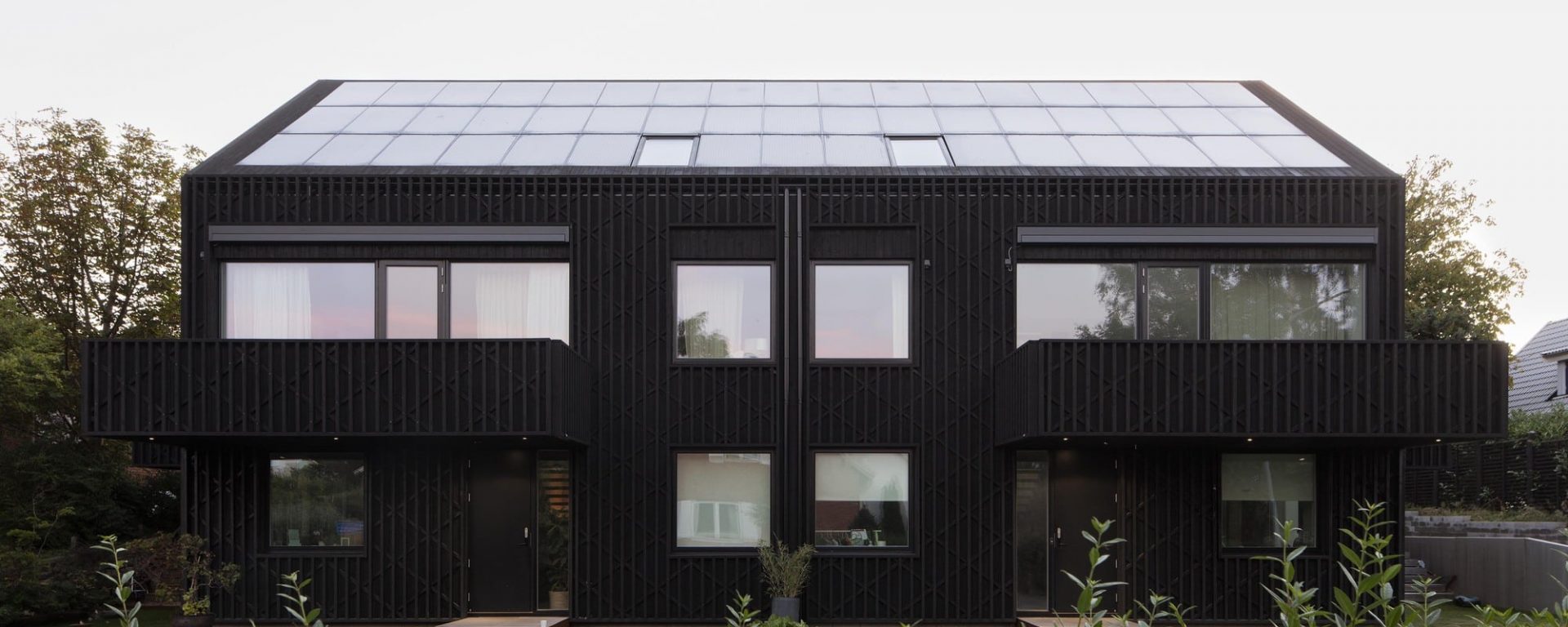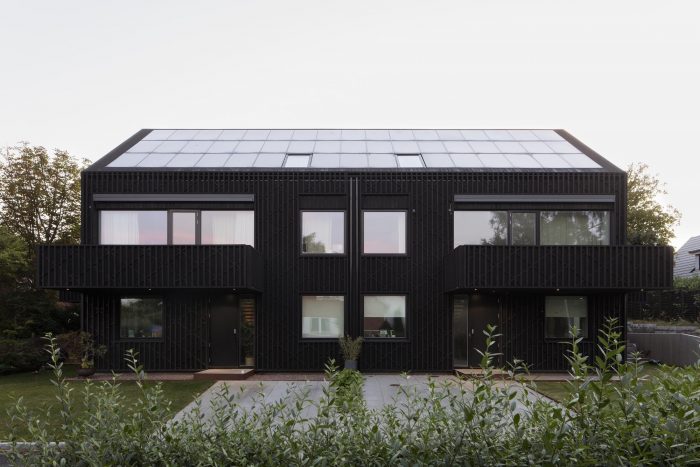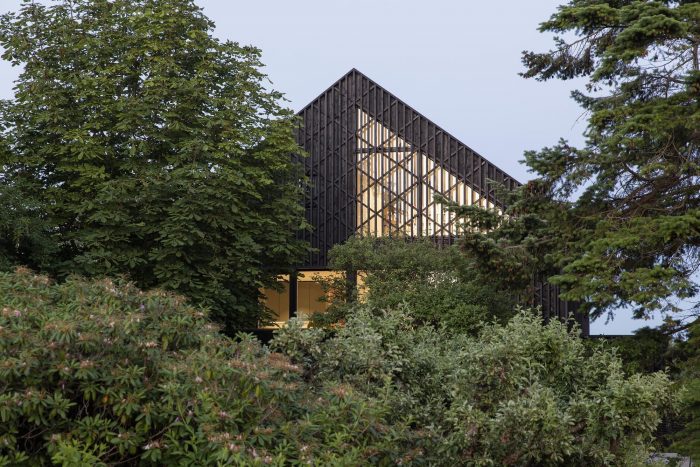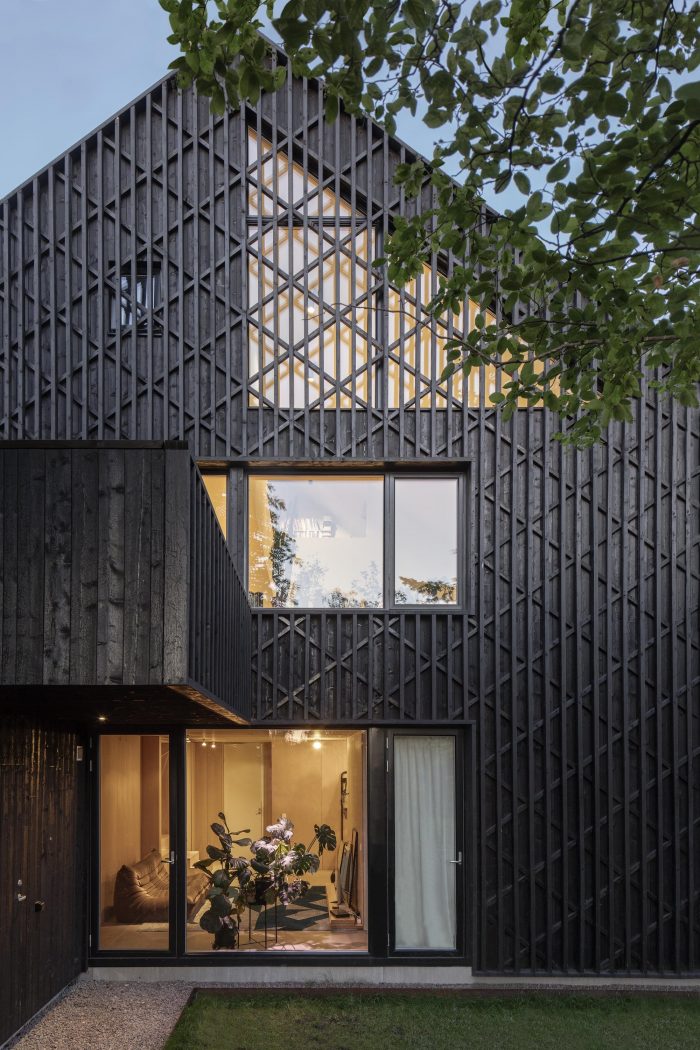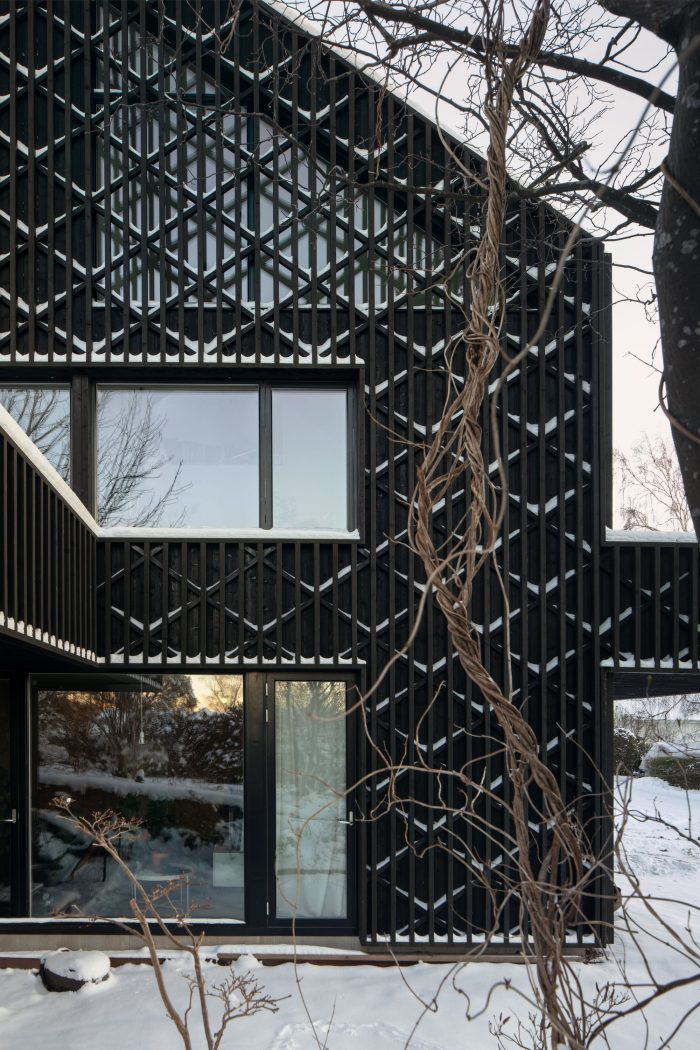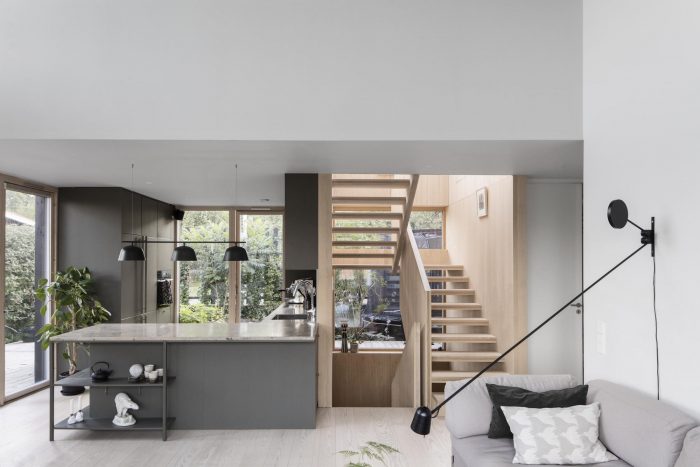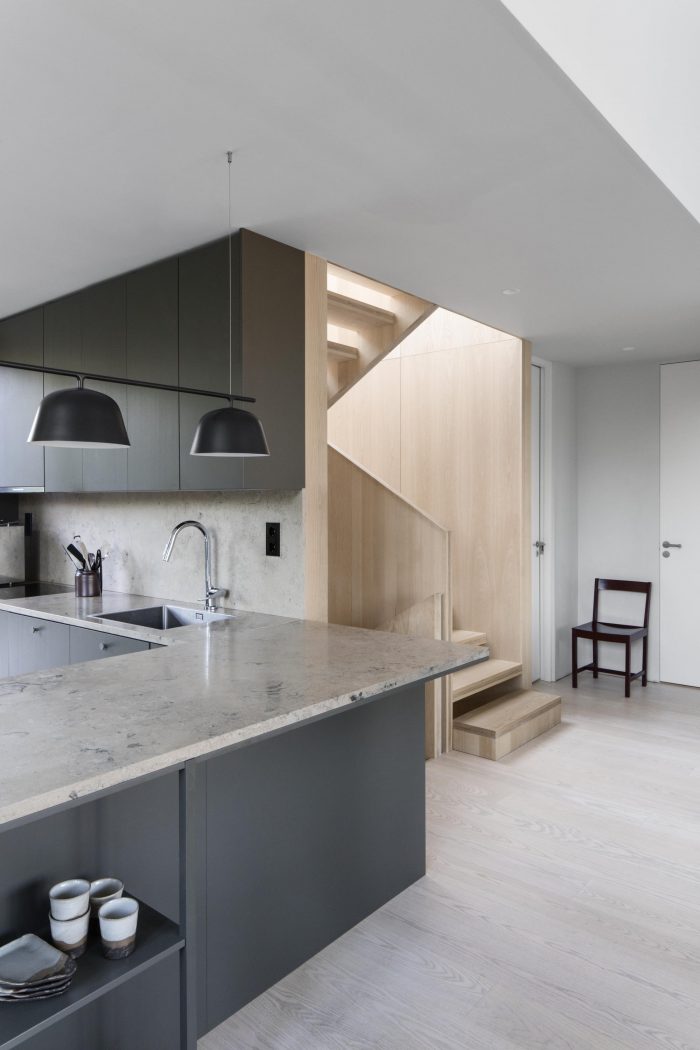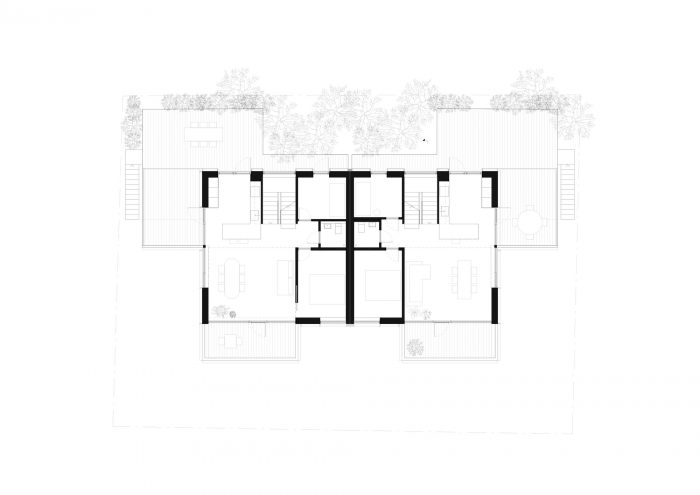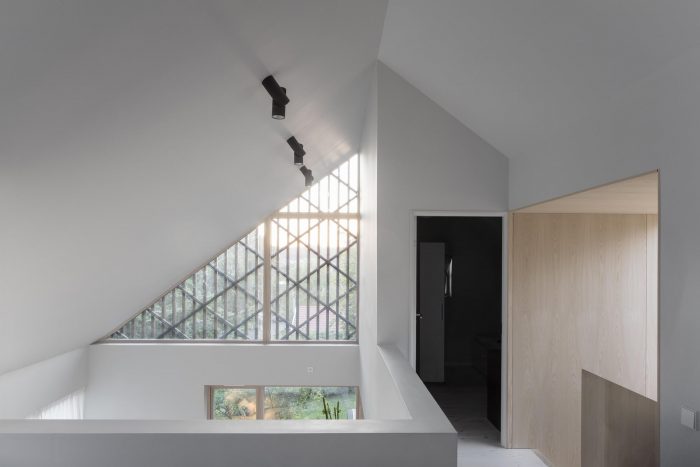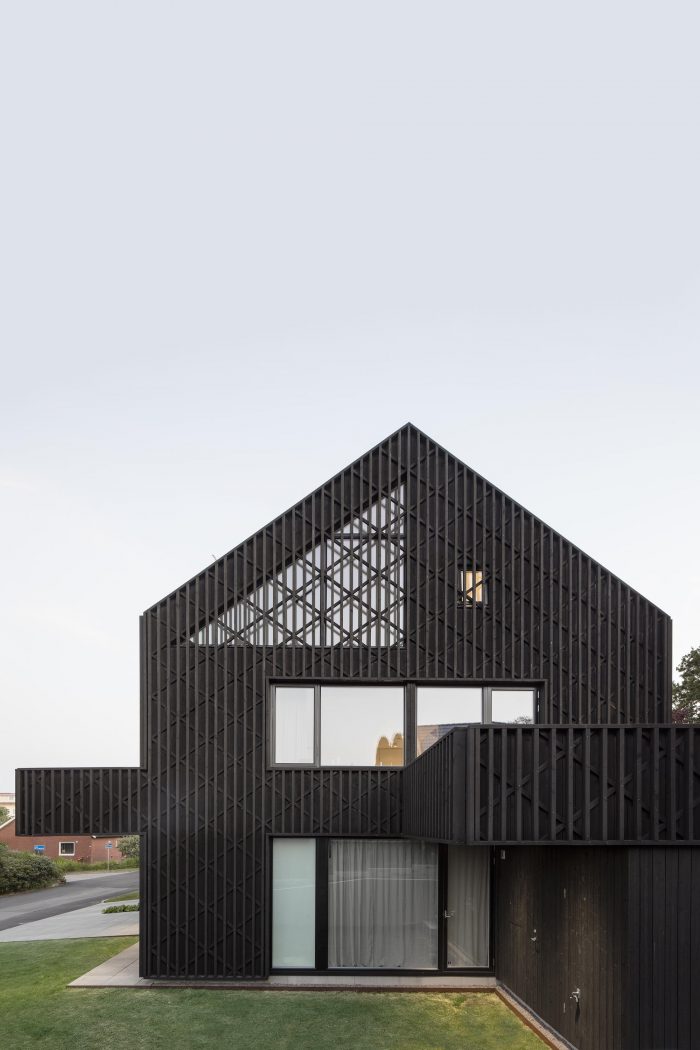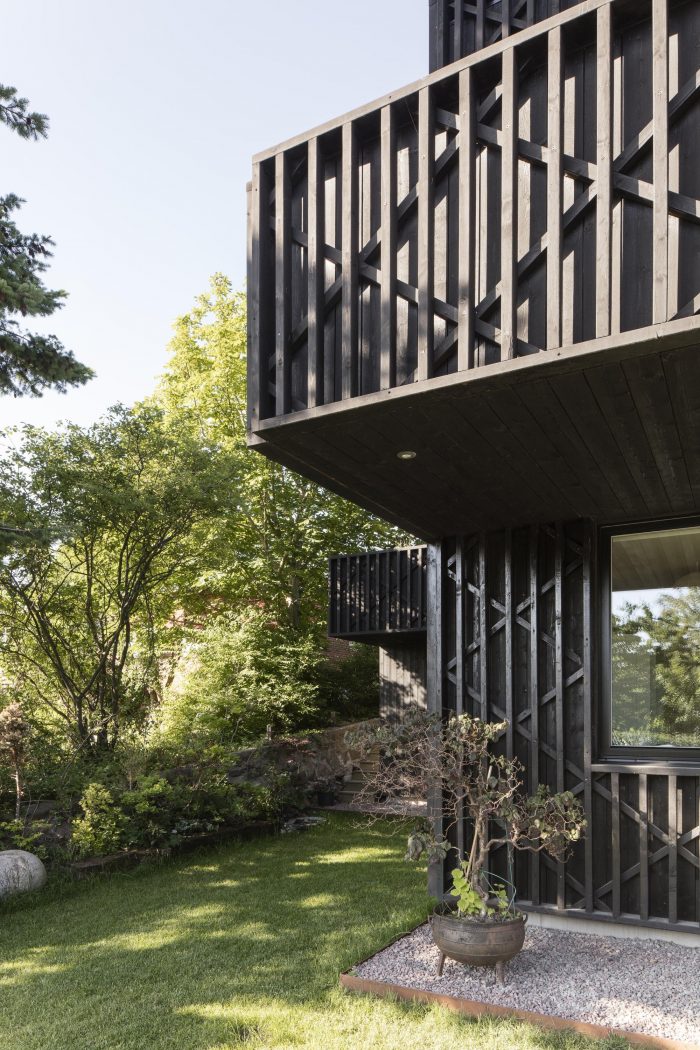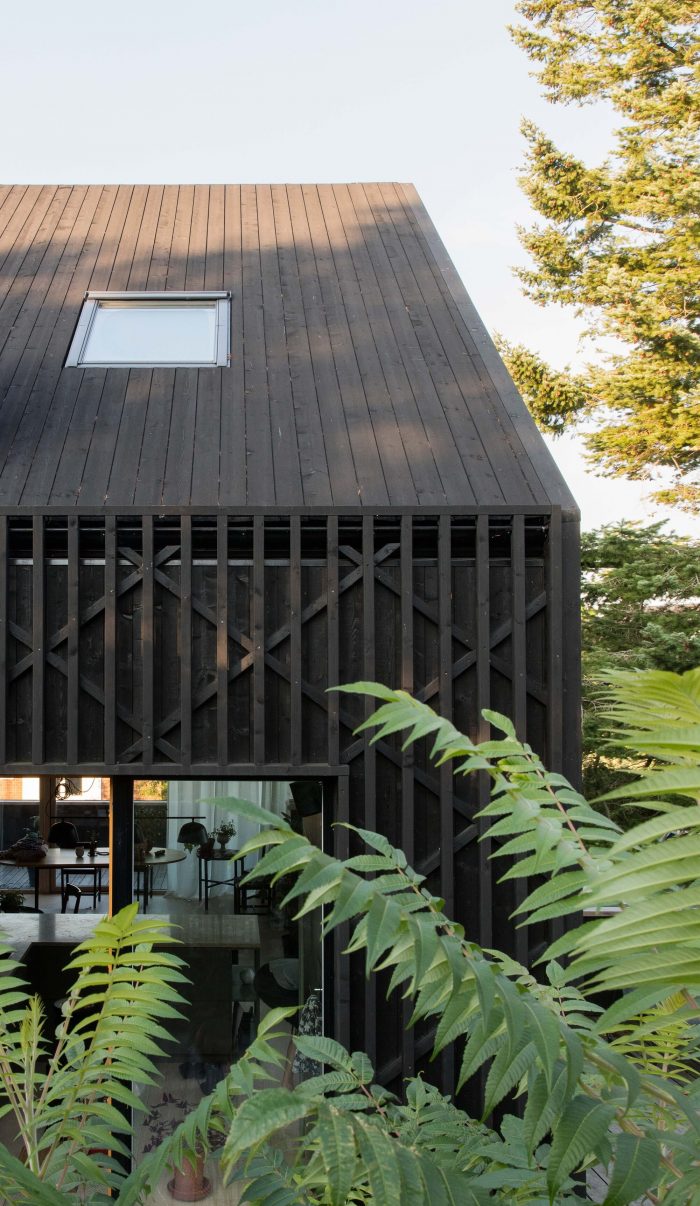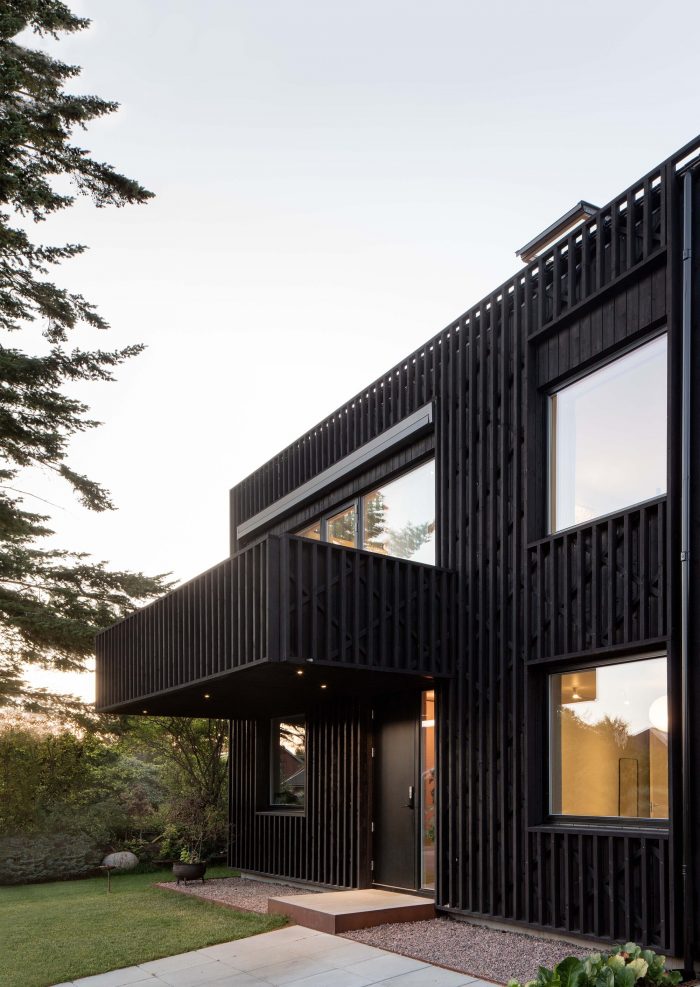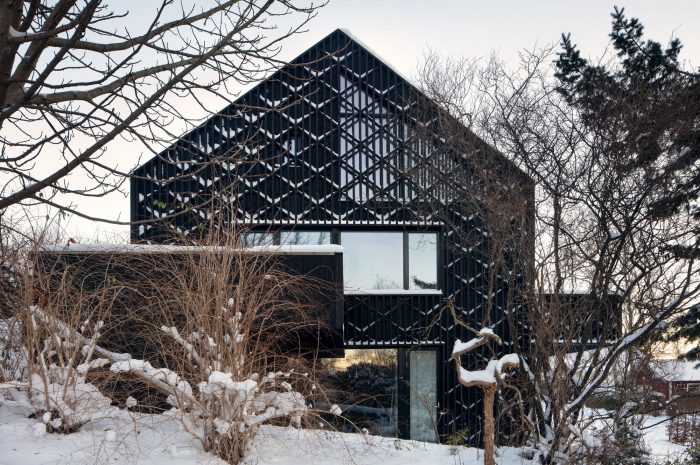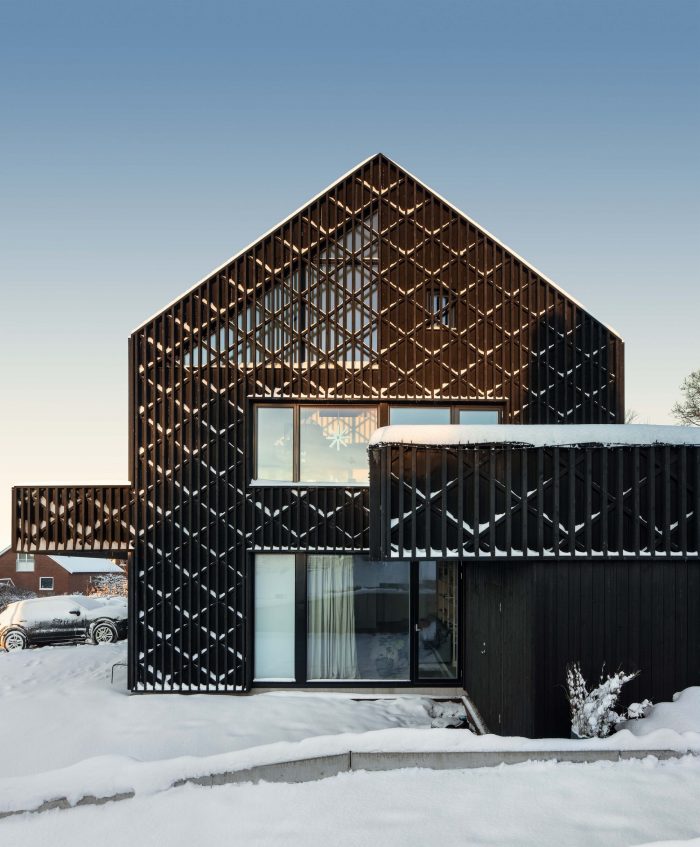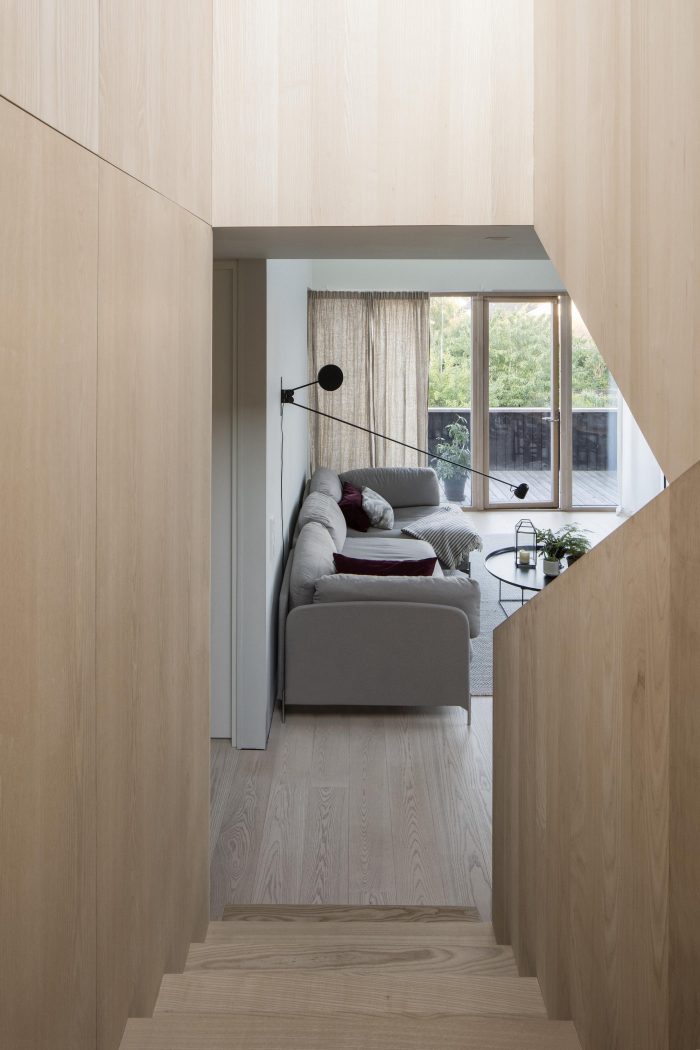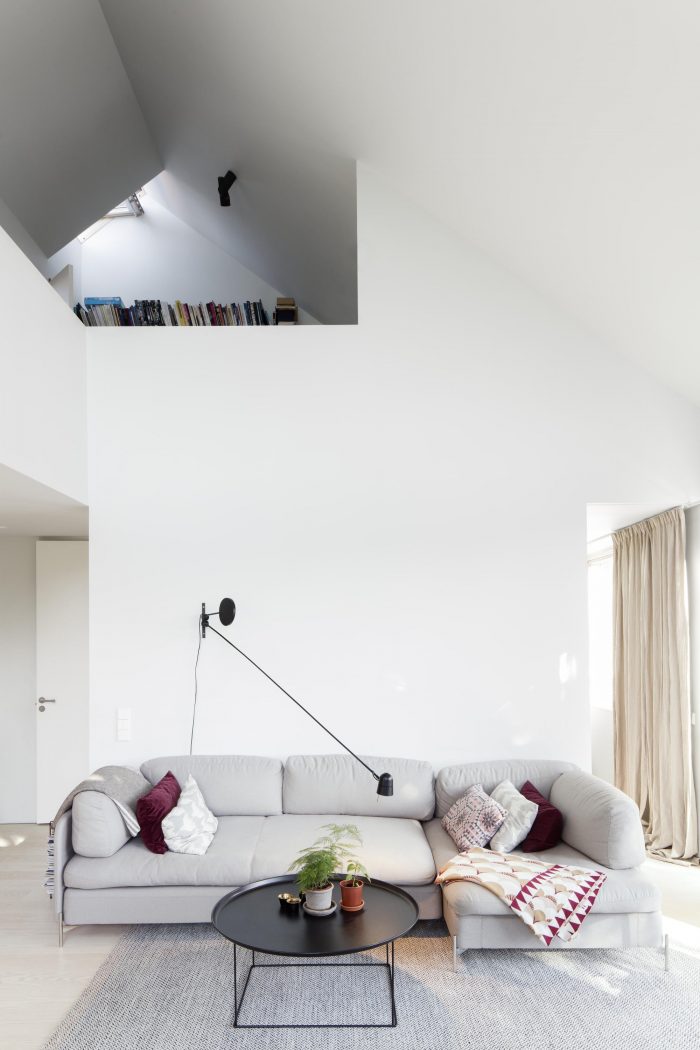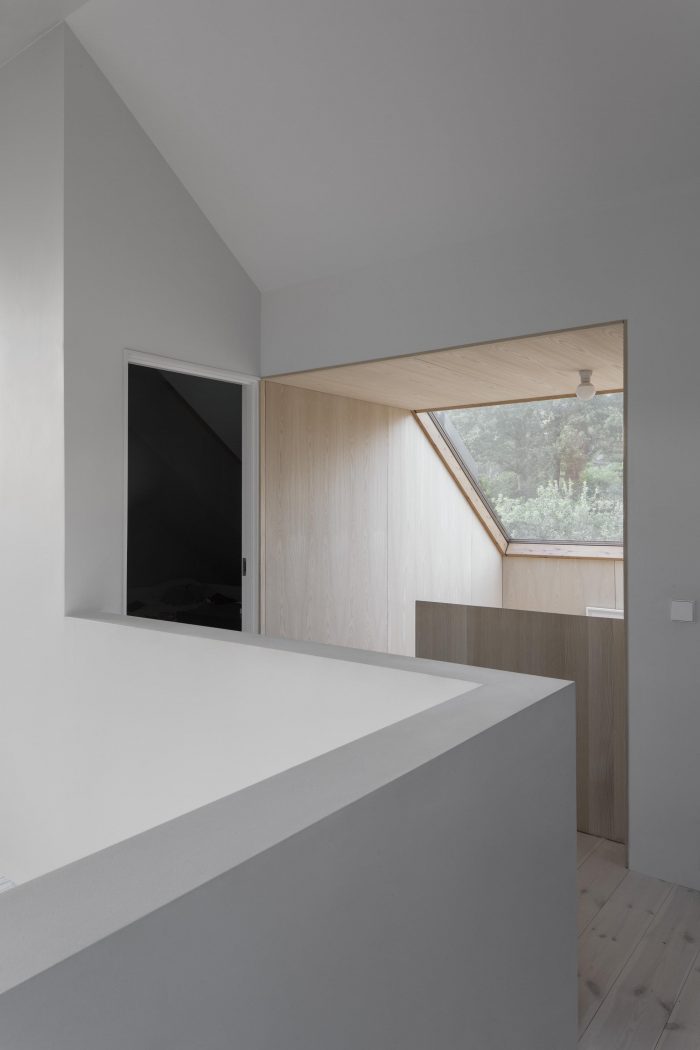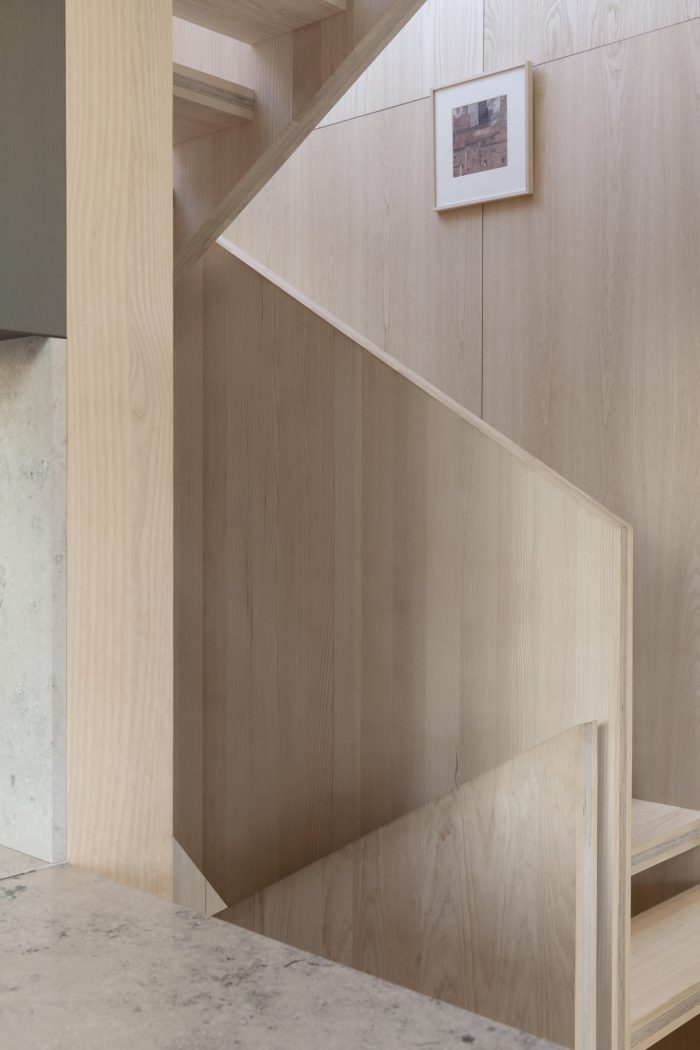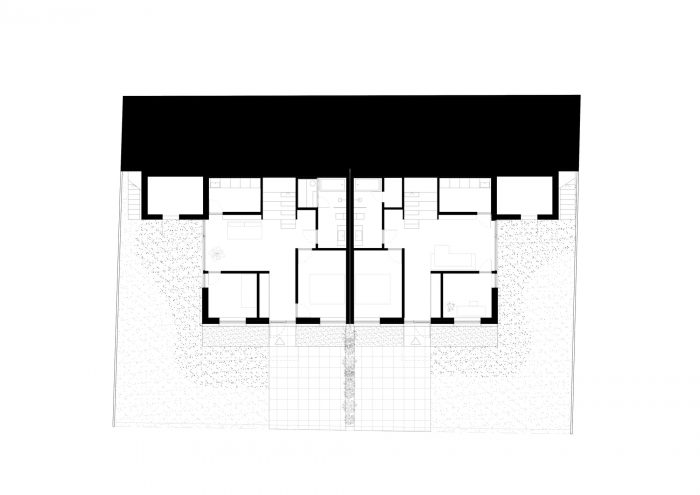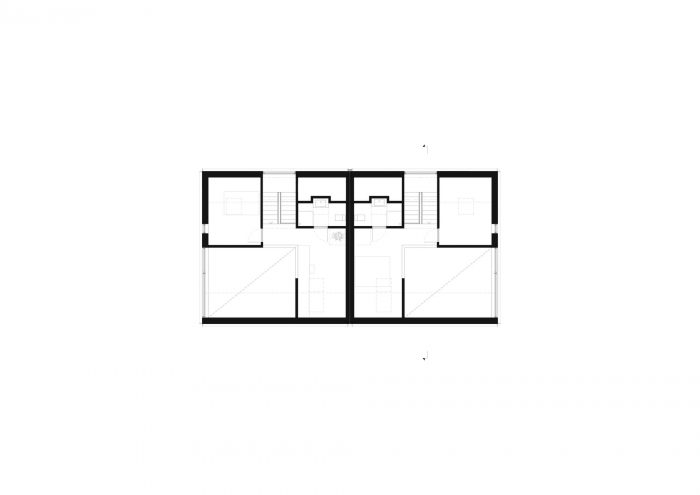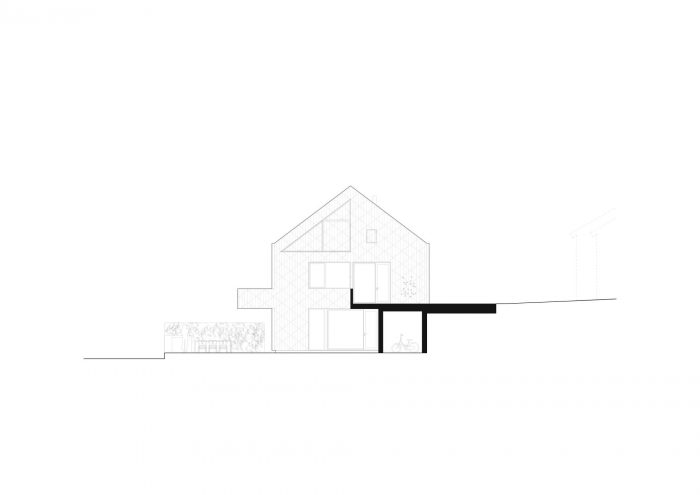在一个面向西南的海边斜坡上,矗立着蒂姆曼别墅,这是由安德烈亚斯-莱克福斯和约瑟芬-维克霍尔姆这对已婚建筑师夫妇设计的半独立式房屋。
On a southwest-facing slope by the sea stands Villa Timmerman, a semi-detached house designed by the married architect couple Andreas Lyckefors and Josefine Wikholm.
位于哥德堡南部的Askim是一个受欢迎的住宅郊区,自20世纪60年代以来逐渐密集化,今天几乎完全开发。在这里,建筑师们买了一块住宅用地,然后在他们自己的主持下建造了一个半独立的房子,房子的另一部分人部分地资助了这个项目。
Askim, in the south of Gothenburg, is a popular residential suburb that has been gradually densified since the 1960s and is today almost completely developed. Here, the architects bought a plot of land for residential use and then built a semi-detached house under their own auspices, where the other part of the house partially financed the project.
情况。安德烈亚斯。创造一个两端质量相等的半独立式房屋是一个挑战,因为它们自然面对不同的方向。我们必须仔细研究当地的条件,并考虑到天气条件、视野、阳光、晚霞、与街道和邻居的接触。最后,房子的安排可以使房子的两个部分都得到早晨、中午和晚上的阳光。在一天中明亮的部分,总有一个露台或阳台上有阳光。
Situation. Andreas: It was a challenge to create a semi-detached house with equal qualities on both ends as they naturally face different directions. We had to study the local conditions carefully and take into account weather conditions, views, sun, evening sun, contact with the street and neighbors. In the end, the house could be arranged so that both parts of the house get morning-, noon- and evening sun. There is always sun on one terrace or balcony during the bright part of the day.
另一个挑战是如何在所有楼层创造品质,因为房子是放在一个斜坡上的。光线在结构中的流动帮助雕刻了计划和安置的开口。房子后面的楼梯,有大窗户和玻璃屋顶,允许大量的光线深入到底层,并平衡夹层的大玻璃部分。其结果是,在地面上光线也来自三个方向。天花板灯和双倍的天花板高度有助于创造一个即使在阴天也有光线流动的家。
Another challenge was to create qualities on all floors as the house is placed on a slope. The flow of light through the structure helped sculpt the plan and placement openings. The stairs at the back of the house, with large windows and glass roofs, allow a good amount of light deep into the ground floor and balance the large glass sections on the mezzanine level. The result is that light comes from three directions also at ground level. Ceiling lights and double ceiling height help to create a home where the light flows even on cloudy days.
通过对这些特质的处理,这两座房子可以被视为独立的部分,与景观和流动的光线和开放空间保持密切的关系,而不是作为山坡地块上的半独立房屋。
By working with these qualities, the two houses can thus be experienced as independent parts, in a close relationship with the landscape and with flowing light and open spaces, rather than as a semi-detached house on a hillside plot.
组织。我们希望房子能够与家庭一起成长,并在生活的各个阶段发挥良好的作用。在孩子们蹒跚学步的时候,可以靠近他们,为青少年家庭提供更多的私人空间,为有成年孩子的家庭提供一个家庭办公室或住宿者。通过打破传统的功能分离的房间规划,可以赋予楼层规划一致的品质。社交室贯穿整个房屋,卧室和厕所被安置在所有楼层。小孩子可以睡在父母身边,而大孩子、青少年或客人可以住在自己的楼层,有一个厕所和自己的客厅。
Organization. We wanted the house to be able to grow with the family and function well during all stages of life. With proximity to the children during the toddler years, more private for the teenage family and with a home office or a lodger for the family with adult children. By breaking up the conventional function-separated room plan, the floor plan can be given consistent qualities. The social room runs throughout the house, bedrooms and toilets are placed on all floors. The small children can sleep close to their parents while older children, teenagers, or guests can live on their own floor with a toilet and their own living room.
材料。这座房子完全由木头建成,预制框架是在现场安装的。深色的木质外墙已经用木焦油处理过,是黑色和棕色颜料的混合物。具体色调的起源是希望有一种更温暖的黑色,它含有丰富的颜料,在不同的光线下可以有不同的体验。
Material. The house is built entirely of wood, with a pre-fabricated frame that was mounted on site. The dark wooden facade has been treated with wood tar, in a mixture of black and brown pigment. The origin of the specific shade was a desire for a warmer black color that was rich in pigment and that could be experienced differently in different lights.
在木头的外面,包层是三个对角线和垂直肋骨的网格。网格是一个实验,它被证明可以很好地作为外墙的太阳辐射保护层和西海岸的漂流雨的保护层。
On the outside of the wood, cladding is three grids of diagonal and vertical ribs. The grid was an experiment that proved to work well as extra protection against solar radiation on the façade and as a protective layer against the drifting rain on the west coast.
屋顶是柏油木板和太阳能电池的组合。在这里,由于精心研究了细节,太阳能电池板已经无缝地融入了木制屋顶。大型的内部楼梯是由白蜡木建造的,墙壁上的贴面是交叉层压的台阶、马车、中间的平台和栏杆。楼梯中的水平面形成小空间,也可作为现场建造的沙发。
The roof is a combination of tarred wood panel and solar cells. Here, the solar panels have been seamlessly integrated into the wooden roof, thanks to a carefully studied detail. The large internal staircase is built of ash wood with veneer on the walls cross-laminated steps, carriage, intermediate landing and railing. The levels in the stairs form small spaces and also function as site-built sofas.
Architects: Bornstein Lyckefors
Area : 179 m²
Year : 2020
Photographs :Kalle Sanner
Main Contractror : BoArt Svenska Designhem
Design Team : Andreas Lyckefors, Josefine Wikholm
City : Gothenburg
Country : Sweden

